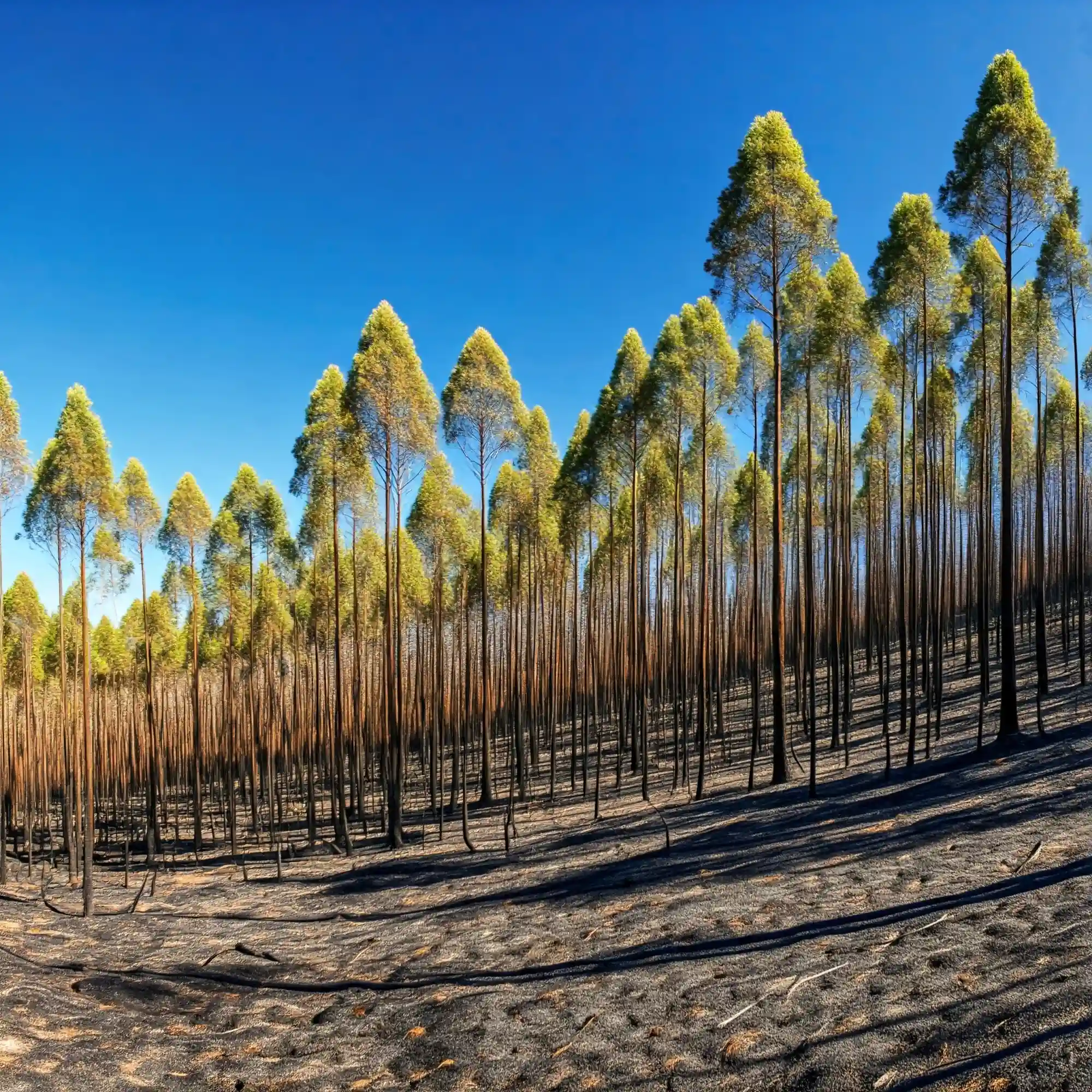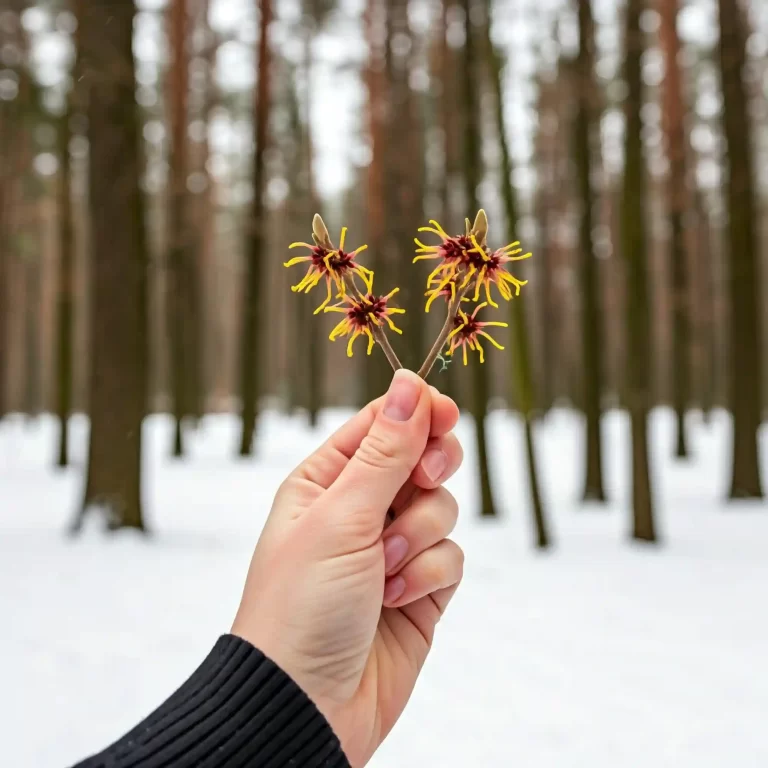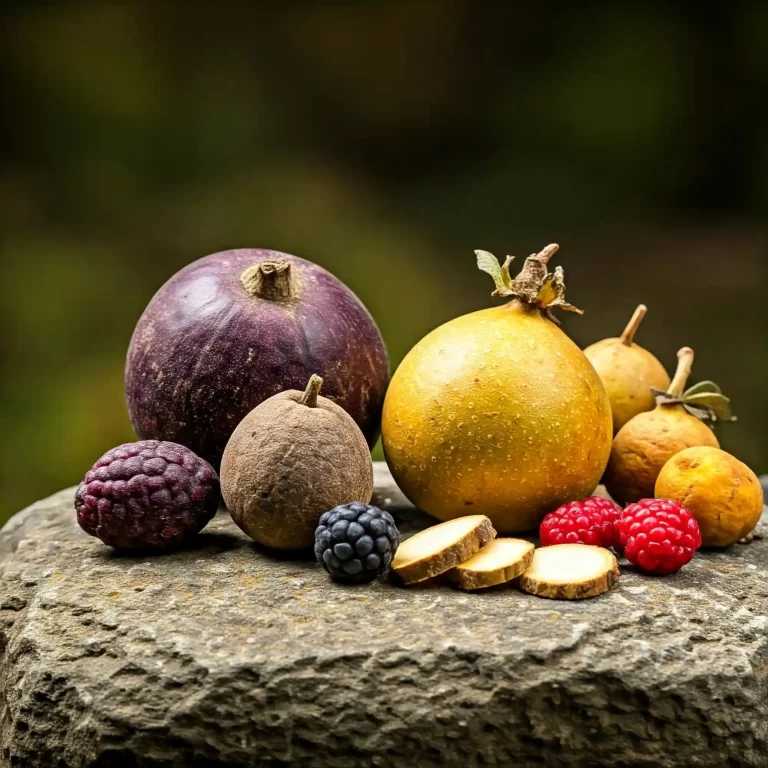Have you ever looked at a landscape ravaged by fire and wondered how anything could possibly survive, let alone thrive? It’s a question that has fascinated me for years, especially when exploring the Australian bush. The sight of charred earth can be disheartening, but beneath the ash lies a story of incredible resilience. You see, some plants aren’t just survivors; they’re fire-adapted. This is the world of pyrophytic plants, and it’s a world I’m excited to share with you. These unique species have developed astonishing strategies to not only endure fire but to use it to their advantage. Today, I’ll introduce you to two remarkable examples found right here in Australia. If you’re a gardener, or simply fascinated by nature’s ingenuity, understanding these plants can offer invaluable insights.
What are Pyrophytic Plants?
When I first learned about pyrophytic plants, I was amazed. You might be too, when you learn how these plants have adapted to fire. You might be wondering what exactly makes a plant pyrophytic? The term, derived from the Greek words “pyro” (fire) and “phyte” (plant), describes plants that have evolved specific traits to survive, regenerate, or even benefit from fire. These adaptations are not accidental; they are the result of millions of years of evolution in fire-prone environments, like much of Australia. As you may know, fire is a natural and recurring force in many ecosystems, and these plants have learned to not only cope with it but to leverage it.
Let’s explore some of the key adaptations that define pyrophytic plants:
- Lignotubers: These are woody swellings at or below the ground level, acting as storage organs for nutrients and energy. I’ve seen these firsthand on many hikes after bushfires, and it’s incredible how new shoots emerge directly from these charred lumps. You can think of them as the plant’s survival bunkers.
- Thick Bark: A thick layer of bark acts as insulation, protecting the plant’s vital inner tissues (the cambium) from the intense heat of a fire. It’s like a natural fireproof jacket.
- Serotiny: This fascinating adaptation involves cones or fruits that remain closed until exposed to the heat of a fire. The heat triggers the release of seeds, often onto a freshly cleared and nutrient-rich ash bed. It’s nature’s way of ensuring the next generation thrives in the post-fire landscape.
- Epicormic Buds: These are dormant buds located beneath the bark or on branches. After a fire damages the outer parts of the plant, these buds sprout, allowing the plant to quickly regrow. It’s like having a backup plan for regeneration.
These adaptations are not just interesting biological features; they play a crucial role in maintaining the health and biodiversity of fire-affected ecosystems. You see, fire isn’t always destructive; it can be a natural process that renews the landscape and creates opportunities for new life.
Common Pyrophytic Adaptations
| Adaptation | Description | Benefit |
| Lignotubers | Woody swellings at or below ground level storing nutrients and energy. | Allows rapid resprouting after fire. |
| Thick Bark | A thick layer of bark that insulates inner tissues from heat. | Protects the plant from fire damage. |
| Serotiny | Cones or fruits that remain closed until exposed to fire, releasing seeds afterward. | Ensures seed dispersal in the post-fire environment. |
| Epicormic Buds | Dormant buds located beneath the bark or on branches that sprout after fire damage. | Enables rapid regrowth of foliage and branches. |
The Importance of Fire in Australian Ecosystems
The relationship between fire and Australian flora is complex and fascinating. Fire has been a part of the Australian landscape for millions of years, shaping the evolution of its unique plant life. As you explore the bush, you’ll notice that many ecosystems seem to rely on fire for their health and regeneration.
Here are some key roles that fire plays in Australian ecosystems:
- Nutrient Cycling: Fire burns organic matter, releasing essential nutrients like phosphorus and nitrogen back into the soil, making them available for new plant growth. It’s nature’s way of recycling.
- Regeneration: Fire clears out old, dead vegetation, creating space and sunlight for new seedlings to germinate and grow. It’s like a natural reset button.
- Maintaining Biodiversity: Fire can prevent the dominance of any single plant species, promoting a diverse and healthy ecosystem. Different species have different fire tolerances, and fire creates a mosaic of habitats.
- Controlling Pest and Disease: Fire can help control certain plant diseases and pests, reducing their impact on the ecosystem.
This understanding of fire ecology is crucial for effective land management and conservation. It also helps us appreciate the remarkable adaptations of pyrophytic plants, which have evolved to not just survive but to thrive in these fire-prone environments. I have personally witnessed the rapid regrowth of vegetation after a bushfire, and it’s a testament to the power of these adaptations.
1. The Majestic Eucalyptus: Australia’s Fire-Loving Giant
The Eucalyptus, an iconic symbol of Australia, stands tall as a testament to nature’s resilience in the face of fire. As I’ve journeyed through the Australian bush, I’ve been consistently struck by the prevalence of these majestic trees, often dominating the landscape even in areas prone to frequent fires. You see, the Eucalyptus has not just adapted to fire; it has embraced it, weaving fire into its very life cycle.
One of the most remarkable adaptations of the Eucalyptus is its thick bark. This isn’t just a superficial layer; it’s a deep, insulating shield that protects the tree’s living tissues from the intense heat of a fire. You can often see the evidence of this after a bushfire, with the outer bark charred black while the inner layers remain green and alive.
Beneath the bark, the Eucalyptus harbors another secret weapon: epicormic buds. These are dormant buds that lie in wait, protected from the flames. When a fire sweeps through and damages the tree’s canopy, these buds spring to life, sprouting new growth from the trunk and branches. It’s an astonishing display of regeneration, a symbol of life emerging from the ashes.
But the Eucalyptus’s relationship with fire goes even deeper. For some species, fire is not just a threat to be endured; it’s a trigger for reproduction. These species possess woody capsules that hold their seeds tightly closed. Only the intense heat of a fire can cause these capsules to open, releasing the seeds onto the freshly cleared and nutrient-rich ash bed. It’s a clever strategy, ensuring that the next generation of Eucalyptus trees has the best possible start in life.
Eucalyptus Adaptations and Fire’s Role
| Adaptation | Description | Benefit |
| Thick Bark | A thick layer of bark that insulates inner tissues from heat. | Protects the plant from fire damage. |
| Epicormic Buds | Dormant buds located beneath the bark or on branches that sprout after fire damage. | Enables rapid regrowth of foliage and branches. |
| Serotinous Capsules | Woody capsules that hold seeds tightly closed, releasing them only after exposure to fire. | Ensures seed dispersal in the post-fire environment. |
2. The Resilient Banksia: A Seed-Storing Survivor
If the Eucalyptus is a symbol of fire-embracing strength, then the Banksia embodies patient resilience. As I’ve explored various Australian landscapes, from coastal heathlands to mountain slopes, I’ve encountered these unique plants in a variety of shapes and sizes. You may recognize them by their distinctive flower spikes, which come in a range of vibrant colors, from yellows and oranges to reds and even purples. But it’s their seed cones, often referred to as “woody cones” or “follicles,” that hold the key to their fire survival strategy.
Many Banksia species exhibit a remarkable adaptation called serotiny. Unlike plants that readily release their seeds, Banksias hold onto theirs with an almost stubborn grip. The seeds are encased within tough, woody cones, and these cones remain firmly closed until a specific trigger occurs: fire.
When a fire sweeps through the landscape, the intense heat causes the Banksia cones to dry out and open, releasing their precious cargo of seeds. This timing is no accident. The fire has not only cleared away competing vegetation but has also created a nutrient-rich ash bed, providing the perfect conditions for the Banksia seeds to germinate and thrive. It’s a brilliant strategy, ensuring that the next generation of Banksias emerges in a landscape primed for new growth.
I’ve often found myself marveling at the sheer number of seeds released after a fire. It’s a veritable explosion of potential, a testament to the Banksia’s commitment to survival. You can often see seedlings carpeting the ground in the months following a fire, a vibrant green carpet rising from the ashes.
But serotiny isn’t the only adaptation that Banksias possess. Some species also have thick bark that helps protect them from fire damage, and some can even resprout from lignotubers, similar to Eucalyptus trees. This combination of adaptations makes them incredibly well-suited to fire-prone environments.
Banksia Adaptations and Fire’s Role
| Adaptation | Description | Benefit |
| Serotinous Cones | Woody cones that hold seeds tightly closed, releasing them only after exposure to fire. | Ensures seed dispersal in the post-fire environment, maximizing germination success. |
| Thick Bark | A thick layer of bark that insulates inner tissues from heat. | Protects the plant from fire damage, allowing it to survive and potentially resprout. |
| Lignotubers (in some species) | Woody swellings at or below ground level storing nutrients and energy. | Allows rapid resprouting after fire, even if the above-ground parts of the plant are severely damaged. |
This adaptation to fire has played a significant role in the distribution and diversity of Banksias across Australia. You’ll find them in a variety of habitats, often in areas that experience regular bushfires. Their presence is a reminder of the powerful forces that shape our natural world and the incredible resilience of life in the face of adversity.
The Role of Fire in Australian Ecosystems
Having explored the remarkable adaptations of Eucalyptus and Banksia, it’s crucial to understand the context in which these adaptations evolved: the vital role of fire in Australian ecosystems. As I’ve spent time in various parts of Australia, I’ve come to realize that fire is not an anomaly here; it’s a natural and, in many cases, necessary process. You might think of fire as purely destructive, but in many Australian landscapes, it’s a force of renewal.
Fire plays a multifaceted role, influencing everything from nutrient cycling to biodiversity. Here are some of the key ways fire shapes Australian ecosystems:
- Nutrient Cycling: When vegetation burns, the fire releases essential nutrients, such as phosphorus and nitrogen, that are locked up in plant matter. These nutrients are then returned to the soil in the form of ash, creating a fertile ground for new growth. It’s like a natural fertilization process.
- Regeneration: Fire clears out old, dead vegetation, making way for new seedlings to germinate and grow. This is particularly important for species like Eucalyptus and Banksia, which rely on fire to trigger seed release and create optimal growing conditions. It’s nature’s way of clearing the slate and starting anew.
- Maintaining Biodiversity: Different plant species have different tolerances to fire. Some are highly susceptible, while others are well-adapted. By creating a mosaic of burnt and unburnt areas, fire helps maintain a diverse range of habitats, preventing any single species from dominating the landscape. This, in turn, supports a greater variety of animal life.
- Controlling Pests and Diseases: Fire can also play a role in controlling certain plant diseases and pests. The heat can kill pathogens and insect larvae, reducing their populations and helping to keep ecosystems healthy.
It’s important to note that not all fires are beneficial. The frequency, intensity, and timing of fires can all have significant impacts on ecosystems. Too frequent or too intense fires can be detrimental, while the absence of fire in fire-dependent ecosystems can also lead to negative consequences, such as the build-up of fuel loads and a decline in biodiversity.
Fire Regimes and Their Impacts
| Fire Regime Aspect | Description | Impact on Ecosystem |
| Frequency | How often fires occur in a given area. | Influences the age structure of vegetation and the opportunity for different species to regenerate. |
| Intensity | The heat and energy released by a fire. | Affects the extent of vegetation damage and the depth of soil heating, influencing which species can survive and resprout. |
| Seasonality | The time of year when fires occur. | Impacts seed dispersal, germination, and seedling survival, as different species have different seasonal growth patterns. |
Understanding these complex interactions between fire and ecosystems is essential for effective land management and conservation. It also highlights the remarkable adaptations of pyrophytic plants, which have evolved to not just survive but to thrive in these dynamic environments.
Gardening with Fire in Mind
Having explored the fascinating world of pyrophytic plants and the role of fire in Australian ecosystems, you might be wondering how this knowledge applies to your own garden. Even if you don’t live in a fire-prone area, understanding these adaptations can inform your gardening practices and help you create a more resilient and sustainable landscape. From my own experience, incorporating these principles has not only led to healthier plants but also a deeper connection with the natural world.
Here are some key considerations for gardening with fire in mind:
- Choose Native Plants: One of the best ways to create a fire-smart garden is to select plants that are native to your region. These plants are naturally adapted to the local climate and soil conditions, and many will also have some degree of fire tolerance. In Australia, this often means choosing species that are pyrophytic or have similar adaptations. You’ll find they often require less water and maintenance than introduced species, as they’re already well-suited to the environment.
- Manage Fuel Loads: This is a crucial aspect of fire-smart gardening, especially if you live in a fire-prone area. Fuel loads refer to the amount of flammable material, such as dry leaves, branches, and bark, that accumulates around your plants. Regularly clearing this material can significantly reduce the risk of fire spreading. I recommend creating a “defensible space” around your home by removing vegetation within a certain radius.
- Strategic Planting: Consider the placement of your plants in relation to your home and other structures. Avoid planting highly flammable species directly next to buildings. Instead, create barriers with less flammable plants or non-combustible materials like gravel or paving. This can help slow down or even stop the spread of fire.
- Water Wisely: While pyrophytic plants are adapted to fire, they still need water, especially during establishment. However, once established, many native Australian plants are drought-tolerant, reducing your water needs. This is not only good for the environment but also for your water bill.
- Consider Controlled Burns (Where Permitted): In some specific situations, and where local regulations allow, controlled burns can be a useful tool for managing native vegetation. This practice mimics natural fire regimes and can promote regeneration and biodiversity. However, it’s crucial to seek expert advice and obtain the necessary permits before undertaking any controlled burns.
By incorporating these principles into your gardening practices, you can create a landscape that is not only beautiful and sustainable but also more resilient to the threat of fire. It’s about working with nature, not against it, and understanding the role that fire plays in shaping our world.
Benefits of Fire-Smart Gardening
| Benefit | Description |
| Reduced Fire Risk | By managing fuel loads and strategically planting, you can significantly reduce the risk of fire spreading to your home and property. |
| Water Conservation | Native plants, many of which are fire-adapted, often require less water than introduced species, helping you conserve water and reduce your water bill. |
| Enhanced Biodiversity | Creating a habitat for native plants supports local wildlife and contributes to the overall health of the ecosystem. |
| Low Maintenance Gardening | Once established, native plants often require less maintenance, saving you time and effort. |
| Connection with Nature | Gardening with fire in mind fosters a deeper understanding and appreciation for the natural world and the role that fire plays in shaping our landscapes. |
This section provides practical advice for gardeners, linking the knowledge of pyrophytic plants to real-world applications. It emphasizes the benefits of fire-smart gardening, not just for fire safety but also for sustainability and biodiversity.
Frequently Asked Questions (FAQs)
Throughout my years of gardening and exploring the Australian bush, I’ve encountered many questions about pyrophytic plants and their relationship with fire. You might have some of the same questions, so I’ve compiled a list of frequently asked questions to help you further understand this fascinating topic.
- What are two examples of pyrophytic plants native to Australia? As we’ve discussed, the Eucalyptus and Banksia are two excellent examples. The Eucalyptus, with its thick bark and epicormic buds, and the Banksia, with its serotinous cones, are both perfectly adapted to fire-prone environments.
- How do two pyrophytic plants survive bushfires in Australia’s ecosystems? They survive through a combination of adaptations. Thick bark insulates them from heat, lignotubers allow them to resprout from underground, and serotiny ensures seed dispersal after fire.
- Can you name two Australian plants that regenerate after fire events? Absolutely! Eucalyptus and Banksia are well-known for their remarkable ability to regenerate after fire. They are often among the first plants to reappear in burnt areas.
- What are two specific adaptations of pyrophytic plants found in Australia? Lignotubers and serotiny are two key adaptations. Lignotubers are underground storage organs that allow for resprouting, while serotiny is the delayed release of seeds triggered by fire.
- Where in Australia can you find two examples of pyrophytic plant species? You can find Eucalyptus and Banksia in many parts of Australia, particularly in bushland, forests, and heathlands. They are widespread across the continent.
- Explain how two pyrophytic plants in Australia utilize fire for seed dispersal. Banksias utilize serotinous cones that open in response to heat, releasing seeds onto the ash bed. Some Eucalyptus species also have serotinous capsules that open after fire.
- What role does fire play for two pyrophytic plant species in Australian bushland? Fire plays a vital role in nutrient cycling, regeneration, and maintaining biodiversity in Australian bushland. It creates opportunities for these species to thrive.
- Identify two Australian pyrophytic plants with unique fire survival strategies. Eucalyptus with its thick bark and epicormic buds, and Banksia with its serotinous cones, each have unique strategies for surviving and even benefiting from fire.
- Describe two examples of pyrophytic plants commonly found in Western Australia. Jarrah ( Eucalyptus marginata) and Firewood Banksia (Banksia menziesii) are two examples commonly found in Western Australia.
- What are the key characteristics of two pyrophytic plants endemic to Australia? Endemic pyrophytic plants in Australia share key characteristics like adaptations to fire, including lignotubers, thick bark, and serotiny. These traits are crucial for their survival and regeneration in fire-prone environments.
This FAQ section aims to address the most common questions you might have about pyrophytic plants in Australia. By understanding these fascinating adaptations, you can gain a deeper appreciation for the resilience of nature and the important role that fire plays in shaping Australian landscapes.
Conclusion: Embracing Nature’s Resilience
As we conclude our exploration of pyrophytic plants in Australia, I hope you’ve gained a newfound appreciation for the incredible resilience of nature. You see, these plants are not just survivors; they are masters of adaptation, thriving in environments shaped by fire. Their unique strategies, from thick bark and lignotubers to serotinous cones, are testaments to the power of evolution.
I’ve always found it inspiring to witness how life can not only endure but flourish in the face of adversity. The pyrophytic plants of Australia embody this spirit, reminding us that even in the aftermath of destruction, there is always the potential for renewal and growth.
By understanding these adaptations, we can also gain valuable insights for our own gardens. Whether you live in a fire-prone area or simply want to create a more sustainable landscape, choosing native plants and managing fuel loads are important considerations.
As you venture out into the Australian bush or even tend to your own garden, I encourage you to look closer at the plants around you. You might be surprised by the hidden stories they have to tell, stories of resilience, adaptation, and the enduring power of life.




